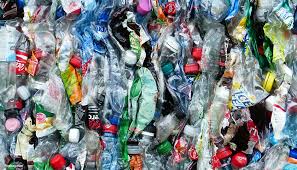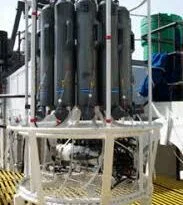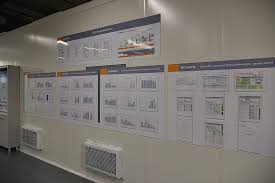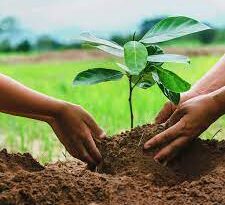How Creating Recyclable Products Support Effective Waste Management
Recycling aids in waste prevention and decreases the amount of garbage dumped in landfills. Businesses must create recyclable items to help efficient trash management. Recycling helps to save resources and lessen the quantity of waste that is dumped in landfills
While some things are simple to recycle, others demand more work. Making items that are hard or extremely difficult to recycle is not something businesses should be doing. Companies that incorporate non-recyclable components into their items are also a part of the issue.
The easiest way for businesses to promote efficient waste management is to design products that are simple to recycle. Likewise, businesses ought to employ recyclable materials in their goods whenever possible. As a result, businesses can contribute to improving the environment and the general state of the globe.
The Benefits of Creating Products That Are Recyclable
Creating recyclable things has a lot of advantages:
1. The fact that it helps reduce the quantity of waste transferred to landfills is one of its most major benefits. Large amounts of rubbish are disposed of in landfills each year. That garbage can harm the environment and consume important space.
2. Producing recyclable products also contributes to resource conservation, which is a benefit. Vast amounts of resources are utilized annually to produce new goods. These resources consist of minerals, energy, and water.
These materials can be used once more when things are recycled as opposed to being mined from the ground. It aids in environmental protection and resource preservation.
3. Recycling promotes job growth. Over 1.1 million employment is directly or indirectly tied to recycling inside the United States alone. From gathering recyclables to creating new goods from recycled materials, these vocations span the industry.
4. Recyclable items reduce the need to mine and refine fresh resources. In addition to using a lot of energy, this process generates a large amount of greenhouse gases. Recycling hence aids in lowering emissions and halting climate change.
Read Also: Industrial Waste and their Impact on the Environment
Ways by Which Recyclable Products Can Be Created

There are several things businesses may do to increase the recyclable content of their products.
1. Utilize recyclable resources: Companies should incorporate recyclable elements into their goods whenever possible. And that covers employing recyclable packaging and recyclable content in the manufacturing process.
2. Facilitate recycling of products: Products must be made with the ability to be quickly disassembled into their component pieces in order to be easily recycled.
3. Use recycling initiatives: When possible, businesses should take part in recycling initiatives. It aids in preventing landfill waste and effective recycling of their products.
4. Educate Customers and Employees: Businesses must educate their workers and customers about recycling, particularly by explaining the benefits of recycling and how to recycle their items.
5. Encourage Recycling Businesses should promote recycling at the federal, state, and municipal levels. And that contributes to the development of laws and rules that promote recycling programs.
It is crucial to make recyclable products for a number of reasons. It promotes resource conservation, job growth, and emissions reduction. When possible, businesses need to use recyclable materials and create goods that are simple to recycle.
How Recycling Helps in Waste Management
Our landfills and incinerator facilities receive less rubbish the more we recycle. We can cut energy and manufacturing costs, as well as the damaging effects that the mining and processing of raw materials have on the environment, by recycling items like aluminum, paper, glass, and plastics.
1. Less garbage is disposed of in landfills and burned in incinerators.
2. Conserves natural resources including water, minerals, and wood.
3. Uses a home supply of materials to increase economic security by lowering the need to gather additional raw materials, reduces pollution.
4. Conserves energy: conserves precious resources and aids American manufacturing.
5. Supports the creation of jobs in the American manufacturing and recycling industries.
By lowering garbage production, recycling can help people. A lot of raw materials are used to make new items.
Tips for Recycling These Products That Are Created
1. Before submitting cardboard for recycling, flatten it.
2. Place dedicated trash cans in your house, workplace, and public areas.
3. Choose recyclable goods.
4. Consider repurposing items and minimizing usage before recycling.
Purchase products with recyclable packaging and do so in large quantities. Refrain from using throwaway and non-biodegradable things. When you go shopping, take a disposable shopping bag with you.
When purchasing things, keep an eye out for extraneous packing. If you believe that the packaging is superfluous, speak with the manufacturer and let them know. The future effectiveness and economy of packaging may greatly benefit from this approach.
Read Also : Water and Waste-water Purification Process
Try to implement recycling into your regular routine. Make sure to always determine whether an item may be recycled or used again before throwing it away.
Even if one household begins recycling and then advances to composting or uses alternative sources by adding solar panels, etc., others may do the same.
This will gradually increase people’s awareness of the environment in general. You may offer to collect recyclables from the curb. Even while it can seem like a modest move, over time this will add up with something significant and benefit the environment.
The following are some recyclable products that can be produced/created:
- Batteries
- Plastics
- Paper
- Glass
- Metal Products
- Electronics
Batteries are corrosive and hefty metal-containing components that are bad for the environment. If the poisonous materials are not recycled, they are released back into the environment and endanger all living things.
Additionally, batteries can seep through into soil and damage the supply of water through their poisonous vapors if they are disposed properly.
Heavy metals and hazardous substances including mercury, lead, chromium, as well as cadmium are even present in electronics. These substances pose a risk to both the environment and living things by contaminating the land, the air, and the water.
The majority of solid garbage is made up of plastic. Plastic is not biodegradable, therefore when you discard it in the trash, it does not decompose naturally.
In conclusion, recycling is a preferable choice because it allows the used object to be thrown away and used to create something new.
Read Also : Integrating Economic Incentives to Promote Recycling in Waste Management



